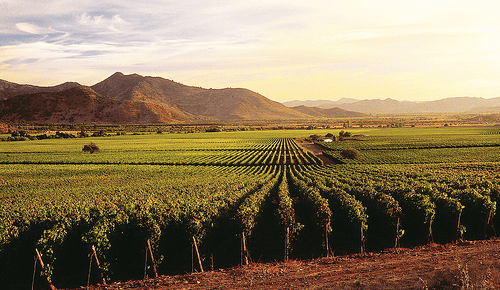
Wine production is steadily entangled with the environmental features (including climate) which characterize origin and growing of a variety. Climate change poses urgent questions about the future of premium wine production in many wine-growing regions and it’s of concern for wine growers to know which climatic conditions an area is going to face in a changing climate scenario.
A warming climate, in particular, can lead to new climatic conditions in viticultural areas and higher temperature generally increases opportunities in cool viticulture climates, as a new study recently published on Computers and Electronics in Agriculture shows (among the authors, CMCC Foundation researchers A.L. Zollo and P.Mercogliano from REMHI Division).
The study aimed at providing an in-depth analysis of the projected change in the quantitative bioclimatic indices that have been developed to assess the landscape suitability for viticulture. All indices were easily calculated by an open source R library (ClimClass). Future climate scenarios were obtained using the Regional Climate Model (RCM) COSMO-CLM and two IPCC’s greenhouse gas concentrations (RCP 4.5 and RCP 8.5), statistically downscaled to 39 weather stations in Trentino Region.
Results highlight a new climatic profile of the area, with a shift towards warmer and somewhat drier conditions; while no limitation to wine growing is expected in the lower altitude areas, new climatic suitability is projected for mountain areas, currently dedicated to other soil uses. More in detail, A general increase in the occurrence of warmer and – with a lesser extent – drier seasons is predicted for every time window (2021–2050 and 2041–2070) and reference scenario (RCP 4.5 and RCP 8.5); of course, the change is more pronounced in the farthest period and for the scenario envisaging a continuous increase in GHG emission (RCP 8.5). Indices reflect the effect of this driver: viticulture could benefit from the expected effects of climate change, which include higher air temperature and drier conditions, with better ripening and sanitary status of the grapes, and spreading to new suitable areas, but at the expense of annual and perennial crops or meadows and pastures, which are part of the rural mountain landscape. The risk in the future could be a reduction of cultivable areas dedicated to premium-quality wine production.
Read the integral version of the article:
Eccel E., Zollo A. L. , Mercogliano P., Zorer R.
Simulations of quantitative shift in bio-climatic indices in the viticultural areas of Trentino (Italian Alps) by an open source R package
2016, Computers and Electronics in Agriculture, Volume 127, Pages 92–100, DOI: 10.1016/j.compag.2016.05.019


